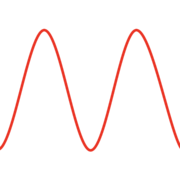How to Test and Measure RF? Utilizing Testing Instruments Across Different Stages of Product Development
Radio frequency (RF) testing and measurement play a pivotal role in wireless communication. They are not just essential for development, production, and post-sales maintenance, but also across diverse domains such as smartphones, smart cars, antenna production, and RF chipset testing. To navigate this crucial aspect of product development, it’s important to understand the commonly used tools at different stages of the process.
RF Testing Instruments in Research and Development Stages
Signal generation and analysis tools are crucial during the research and development stages. They allow you to simulate real-world communication environments and conduct in-depth signal analyses. A vector signal generator generates signals, while a vector signal analyzer is employed for detailed signal analysis, including error rate analysis, spectrum analysis, and symbol timing analysis.
RF testing and measurement are instrumental in identifying and quantifying various issues and characteristics within the signals. In this context, YTTEK’s PluSDR offers a new option. It simplifies your testing equipment by integrating both a vector signal generator and vector signal analyzer functions into a single platform. With built-in modulation options and the ability to generate various signals using C++ or MATLAB code, it’s a powerful tool for measuring and validating your communication system.
- Highly flexible software-defined radio platform
- Support for 10 MHz to 9 GHz frequency band
- 400MHz high bandwidth per channel
- Maximum 2TX2RX
- Expandable to synchronize up to 4 units for achieving an 8T8R configuration
- Support 5G NR, WiFi, CCSDS (satellite communication) standards
RF Testing Instruments in Production
In production, signal sources like vector signal generators help you generate various types and frequencies of signals to verify product performance and frequency response. Meanwhile, vector signal analyzers (VSAs) analyze signals received from the antenna to evaluate its characteristics, such as gain, directivity, and frequency response. This process involves debugging, validation, and radiation characteristic testing to ensure optimal performance and adherence to specifications.
You may also conduct impedance matching and reflection loss tests to assess the product’s performance. A vector network analyzer (VNA) or PluSDR can assist in testing the overall network performance by conducting comprehensive measurements of transmission parameters such as S-parameters.
The PluSDR, a powerful RF testing and measurement instrument, can also connect with the mmWave front-end module. This enables higher-frequency communication research and testing, spanning from 5G mmWave to LEO satellite testing scenarios. With these capabilities, PluSDR offers reliable tools for high-frequency wireless communication testing, fully unleashing your RF design capabilities.

